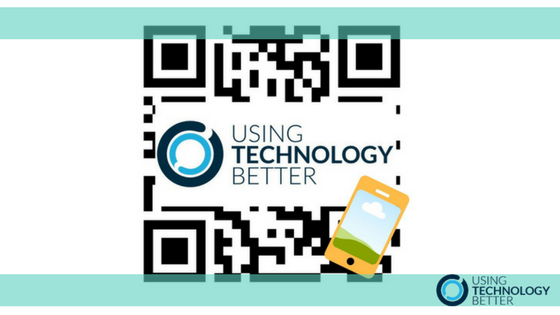QR code basics
What is a QR code?
QR is short for ‘Quick Response’ and these codes are similar to traditional barcodes. They can store digital information and are scanned with mobile phones and tablets to take the user to the chosen destination.
Making QR Codes
You can create a QR code for any website or cloud document. There’s heaps of free websites that will generate these for you, here’s a couple that you can use without having to sign up.
QR Code Generator
QR Stuff
QR Code Monkey
All you need to do is copy the URL of the destination you want to direct your students to, paste it into one of these QR code generators and it will make one for you.
You can then download the QR code and print it or place it onto any documents online.
There’s a great Google Chrome Extension called goog.gl URL Shortener, which will create QR codes (and shortened URLs) of any page, without having to leave that page.
Reading QR Codes
Many smartphones (and newer iPads) now have a QR code scanner built into their cameras, meaning you can just point the camera at a QR code and it will pop up a message asking you if you’d like to open that link. If your device does not have this feature built-in you can download a QR code scanner from your app store.
Ideas for QR codes in the classroom
Treasure Hunt
Set up Microsoft or Google Forms that ‘branch’ depending on the answer given. Set up different questions/puzzles and put these as the answers to the questions on the form. Students solve the problem,‘read’ the QR code at the station with their phone or iPad, then the QR code takes them to the form where they can enter the solution – if it’s correct they get the location of the next QR code. You could spread these around your class or around your school. A great alternative to assessments or end of topic review.
[bctt tweet=”Use QR codes to create a fun, end of unit treasure hunt.” username=”lara_kirk”]
More info
Make your classroom displays interactive and bring the digital world to your walls.
- Provide links to more information about your class topics – videos, websites, student created content as well.
- If you have a set of instructions or information on your classroom wall that all students need to access frequently, you could record yourself reading this aloud (or get the kids to record it). This makes it so much more accessible for those students who may find reading challenging.
[bctt tweet=”Bring your classroom displays to life with digital media and QR codes.” username=”lara_kirk”]
Showcase the process
We know that the process is more important than the product but often it is the product that is on display. When doing a project, get your students to capture the moments along the way with photos, quick audio recordings or videos, then compile these somewhere online (slideshow, video, blog) and generate a QR code for this destination. Put the QR code alongside the displayed product so that viewers can find out more about the learning behind it. This works beautifully with the ‘Design Thinking’ process as well as a great way to make learning visible.
[bctt tweet=”Use QR codes to show the learning journey on static displays.” username=”lara_kirk”]
Check In
QR codes could be used to get your students to check in in the morning.
In primary classrooms the QR code might lead them to a Padlet or a Flipgrid where they can take a quick photo of themselves and type hello. This could be displayed live on your screen while students are arriving into your class in the morning.
In secondary, maybe it takes them to a Form that they can quickly fill in with their name. This will provide a date stamp and time on the spreadsheet also.
This could also direct them to any collaborative documents or notes they will need for the lesson.
Communicating with home
Often we email parents or send home paper newsletters. We know that this doesn’t always get the best response or attention paid to it. By sending home QR codes you may have more success as parents can quickly scan them with their phones without having to log in or head to their computer. This would be a great way to share student work, gather info about trips or direct them to important information. It will stand out more than an email and you can print several on one page to reduce paper usage. If your students are loving using QR codes they are also much more likely to remember to share it with their parents too!
Create a QR code that leads to your class blog or webpage – no need to update the code, just update the blog. Put it on your class window, parents who are waiting to pick up their students can open it up and have a look while they wait. Send one home at the start of the year, laminated, with a magnet on the back, and encourage students to put it on their fridge.
[bctt tweet=”Create a fridge magnet with a QR code taking to your class blog.” username=”lara_kirk”]
Answers/Solutions
Share answers to quizzes and tests with QR codes so that students can easily mark their own work. Using a QR code means that they are hidden until needed.
There are so many ways to use a QR code in your classroom. You’ll probably find that once you start using them your students will begin including them in their assignments and tasks as well.
Want more tips and tricks? Head over to the Using Technology Better website, check out the other great blog posts and find out when the next event is on near you.











